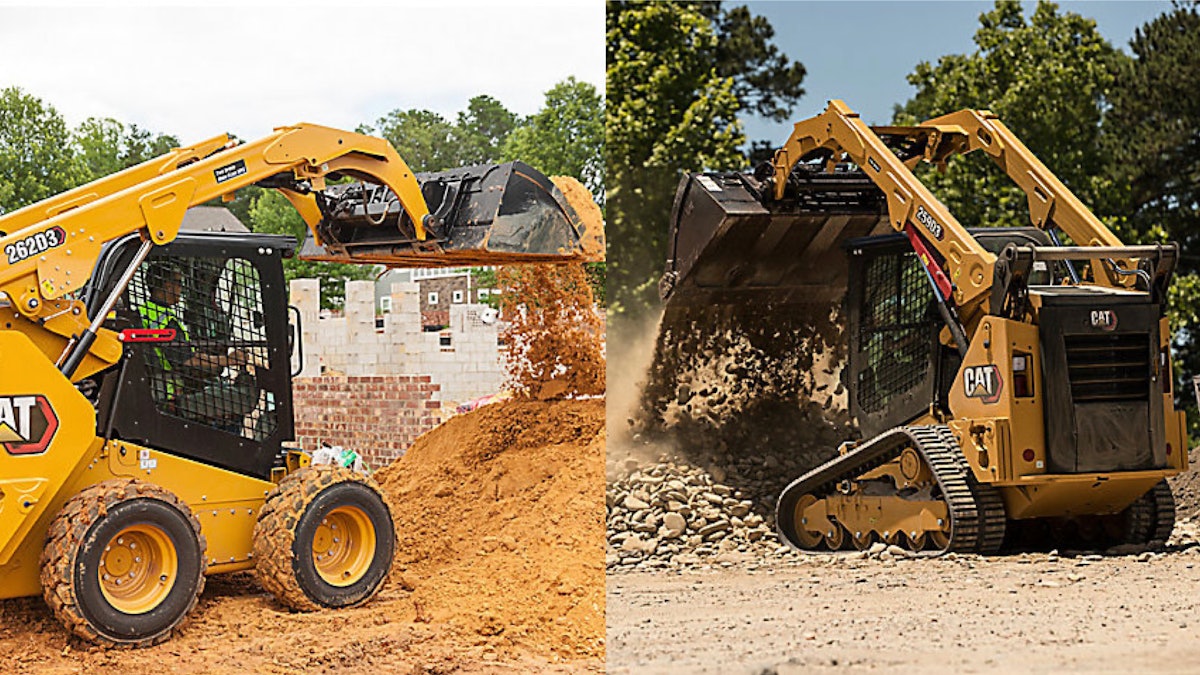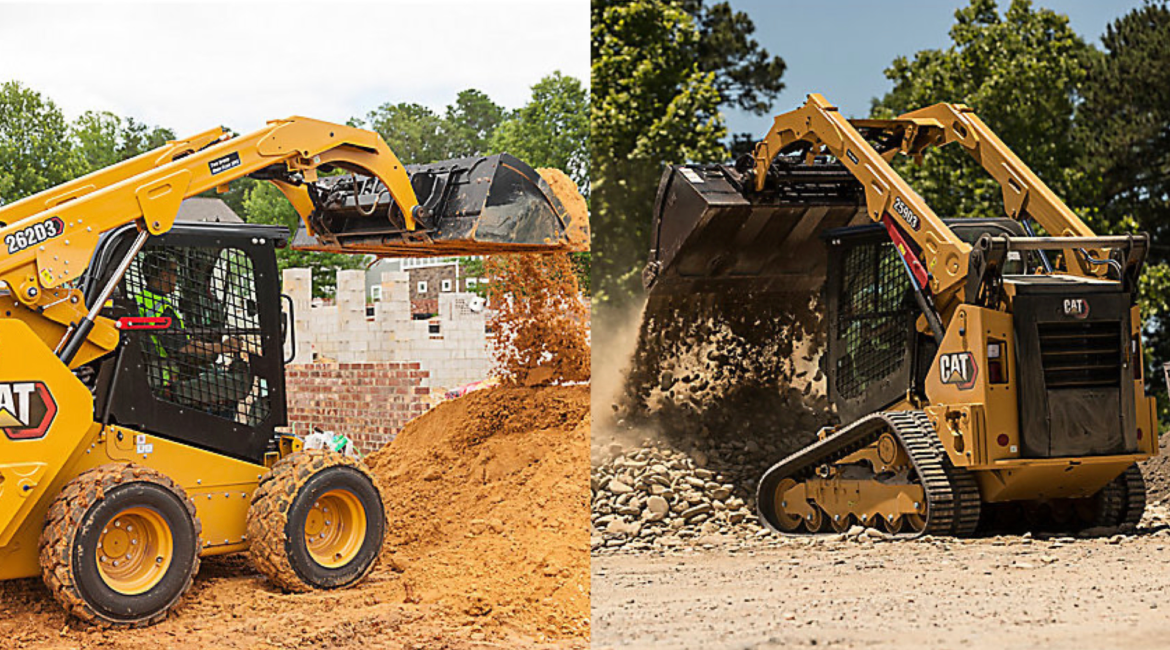Can compact skid steers handle heavy lifting? If you’ve ever wondered whether these powerful machines are up to the task, you’re in the right place! Skid steers are known for their versatility and agility, but when it comes to tackling heavy loads, can they hold their own? Let’s dig in and find out!
When it comes to compact skid steers and heavy lifting, it’s natural to have questions. Are they strong enough? Can they handle the weight? Well, you’re about to discover the answers. In this article, we’ll explore the capabilities of compact skid steers and uncover whether they have what it takes to handle those hefty loads.
So, buckle up and get ready to dive into the world of compact skid steers and heavy lifting! We’ll explore their power, lifting capacity, and the various factors that come into play. Whether you’re a curious learner or a seasoned industry professional, we’re here to give you the lowdown on these mighty machines. Let’s get started!

Can Compact Skid Steers Handle Heavy Lifting?
Compact skid steers are versatile machines that have become increasingly popular in the construction and landscaping industries. These small but powerful machines are known for their maneuverability and ability to work in tight spaces. However, one common question that arises when considering compact skid steers is whether they can handle heavy lifting. In this article, we will explore the capabilities of compact skid steers when it comes to heavy lifting, discussing their specifications, advantages, and potential limitations. Whether you’re a contractor, landscaper, or simply interested in learning more about these machines, read on to find out if compact skid steers are up to the task of heavy lifting.
Specifications of Compact Skid Steers
Before diving into the question of whether compact skid steers can handle heavy lifting, let’s first take a closer look at their specifications. Compact skid steers are typically designed to have a low center of gravity, which gives them excellent stability and allows them to lift and carry heavy loads without tipping over. They are equipped with a hydraulic system that powers their various attachments, such as buckets, forks, or grapples. This hydraulic system provides the necessary force to lift and maneuver heavy objects. Additionally, compact skid steers often have a powerful engine, varying in horsepower depending on the model, which contributes to their lifting capacity. Their compact size and tight turning radius make them ideal for navigating smaller job sites and working in confined spaces.
Advantages of Compact Skid Steers in Heavy Lifting
Compact skid steers offer several advantages when it comes to heavy lifting. Firstly, their smaller size allows them to access areas that larger construction equipment cannot reach, making them highly versatile. They can easily maneuver through narrow doorways, tight corners, and crowded worksites, making them an efficient choice for many construction and landscaping projects. Secondly, the hydraulic systems of compact skid steers provide exceptional lifting power. They are capable of lifting heavy loads, such as pallets of materials, large rocks, or even trees, with ease. The ability to quickly switch between different attachments, such as buckets, forks, or grapples, further enhances their lifting capabilities. Thirdly, compact skid steers have excellent stability due to their low center of gravity, enabling them to safely carry and transport heavy loads without risking tip-overs. Overall, these machines offer the power, maneuverability, and stability required for efficient heavy lifting tasks.
Potential Limitations of Compact Skid Steers in Heavy Lifting
While compact skid steers excel in many aspects of heavy lifting, there are a few potential limitations to consider. One key factor is the lifting capacity of the specific model you choose. Compact skid steers come in various sizes and configurations, and their lifting capabilities can vary accordingly. It’s crucial to select a machine that has an adequate lifting capacity for your intended tasks. Additionally, the stability of a compact skid steer can be affected by uneven or soft terrain. In certain situations, such as working on inclines or in muddy conditions, the machine’s lifting capabilities may be compromised. It’s important to assess the working conditions and terrain before using a compact skid steer for heavy lifting to ensure optimum safety and performance. Finally, it’s worth noting that compact skid steers are not designed for the same level of heavy lifting as larger construction equipment, such as excavators or cranes. While they can handle many heavy lifting tasks, there may be instances where a larger machine is more suitable.
Applications of Compact Skid Steers in Heavy Lifting
Compact skid steers are employed in various industries for heavy lifting tasks. Here are some common applications where compact skid steers excel:
1. Construction Sites
Compact skid steers are widely used in construction sites for a range of heavy lifting tasks. They can transport and place construction materials, such as lumber, bricks, or concrete blocks. With the right attachments, they can also dig trenches, lift and carry heavy machinery, and assist in site preparation.
2. Landscaping and Grounds Maintenance
In the landscaping and grounds maintenance industry, compact skid steers play a significant role in heavy lifting. They can be used to lift and transport large rocks, trees, or shrubs during landscaping projects. They are also effective for hauling and spreading materials like mulch, soil, or gravel.
3. Agriculture and Farming
Compact skid steers have proven useful on farms and in agricultural settings. They can assist with tasks such as loading hay bales, moving feed or grain, and cleaning manure or other waste materials. Their compact size allows them to access tight spaces within barns or poultry houses.
4. Demolition and Debris Removal
When it comes to demolition and debris removal, compact skid steers can be invaluable. They can safely lift and transport debris from demolition sites, reducing manual labor and improving efficiency. They can also be equipped with attachments like grapples or buckets to sort and separate materials, making debris disposal easier.
Factors to Consider When Using Compact Skid Steers for Heavy Lifting
1. Weight and Center of Gravity
Ensure that you are aware of the weight and center of gravity of the loads you plan to lift with a compact skid steer. Exceeding the recommended weight limit or having an imbalanced load can compromise the stability and safety of the machine.
2. Terrain and Conditions
Take into consideration the terrain and working conditions where heavy lifting will occur. Uneven or soft ground can affect stability and lifting capacity. It’s important to assess the site and make any necessary preparations to ensure safe and efficient operation.
3. Attachment Selection
Choose the appropriate attachment for the heavy lifting task at hand. Whether it’s a bucket, fork, grapple, or another attachment, selecting the right tool can optimize lifting performance and overall productivity.
4. Operator Training and Safety
Proper training is essential for operators of compact skid steers involved in heavy lifting. Make sure operators are trained on relevant safety protocols, the correct operation of the machine, and any specific requirements for lifting tasks.
Conclusion
Compact skid steers are well-equipped to handle heavy lifting tasks in a variety of industries. Their compact size, maneuverability, and hydraulic systems make them ideal for navigating tight spaces and lifting heavy objects. However, it’s important to consider the specific model’s lifting capacity, working conditions, and attachment selection. By assessing these factors and following proper safety protocols, operators can maximize the performance and efficiency of compact skid steers when it comes to heavy lifting.
Key Takeaways: Can compact skid steers handle heavy lifting?
- Compact skid steers are versatile machines that can handle heavy lifting tasks.
- Despite their smaller size, they have a strong lifting capacity.
- Compact skid steers can lift and transport heavy materials like pallets and construction equipment.
- They are ideal for jobs in tight spaces where larger machinery cannot reach.
- However, it’s important to consider the specific weight limits and operating guidelines of each skid steer model.
Frequently Asked Questions
In the world of construction and heavy machinery, compact skid steers are becoming increasingly popular. They offer versatility and maneuverability in tight spaces. But can they handle heavy lifting? Find out below.
1. What is the lifting capacity of compact skid steers?
Compact skid steers vary in lifting capacity depending on the specific model and attachments used. On average, these machines can lift anywhere from 1,000 to 4,000 pounds.
However, it’s important to note that the lifting capacity specified by the manufacturer refers to the maximum weight that can be safely lifted in ideal conditions. Factors such as machine stability, the attachment being used, and the terrain can affect the actual lifting capacity.
2. Can compact skid steers lift materials to high heights?
Yes, compact skid steers are capable of lifting materials to significant heights. Some models can reach lift heights of up to 10 feet or more, depending on the attachments and hydraulic systems installed.
Keep in mind that the lift height can vary depending on the model and configuration. For tasks that require lifting materials to extreme heights, it may be necessary to use additional equipment or cranes.
3. Are there any limitations to what compact skid steers can lift?
While compact skid steers are capable of handling heavy lifting, there are limitations to what they can safely lift. These machines are designed to be compact and maneuverable, which means their lifting capacity is lower compared to larger construction equipment.
It’s essential to adhere to the manufacturer’s guidelines and not exceed the recommended lifting capacity. Overloading a compact skid steer can compromise stability and pose a safety risk.
4. What attachments can enhance the lifting capabilities of compact skid steers?
Various attachments can enhance the lifting capabilities of compact skid steers. Some popular options include pallet forks, grapple buckets, and material handling arms.
These attachments provide a secure and efficient way to lift and transport heavy materials. When choosing attachments, it’s important to consider the weight and size of the materials you’ll be lifting to ensure they are compatible with the compact skid steer’s lifting capacity.
5. Can compact skid steers handle lifting tasks on uneven terrain?
Yes, compact skid steers are designed to handle lifting tasks on uneven terrain. Their compact size and maneuverability allow them to navigate rough and uneven surfaces with ease.
However, it’s important to exercise caution and assess the stability of the machine before attempting any lifting tasks on uneven terrain. If necessary, additional safety measures such as stabilizer bars or outriggers can be used to ensure the stability of the compact skid steer during lifting operations.
Summary
So, can compact skid steers handle heavy lifting? Well, it depends on a few factors.
First, these machines are smaller and lighter than their larger counterparts, so they may not have the same lifting capacity. However, they can still handle a decent amount of weight, especially if equipped with the right attachments.
Second, the terrain and conditions play a role. Compact skid steers may struggle on rough or muddy surfaces, making it harder to lift heavy loads.
Ultimately, while compact skid steers may not be as powerful as larger machines, they can still handle many heavy lifting tasks with the right setup and under the right conditions.

